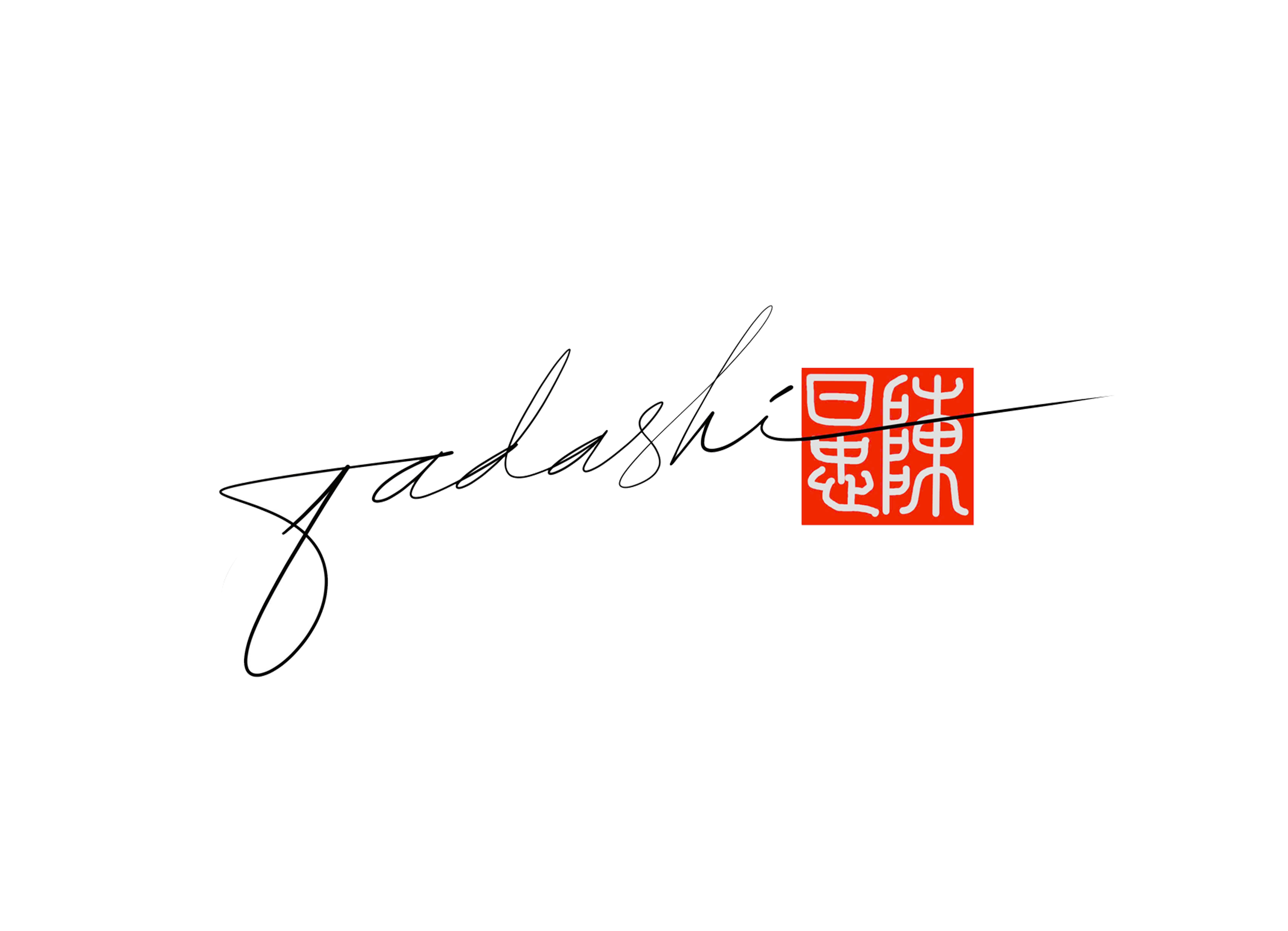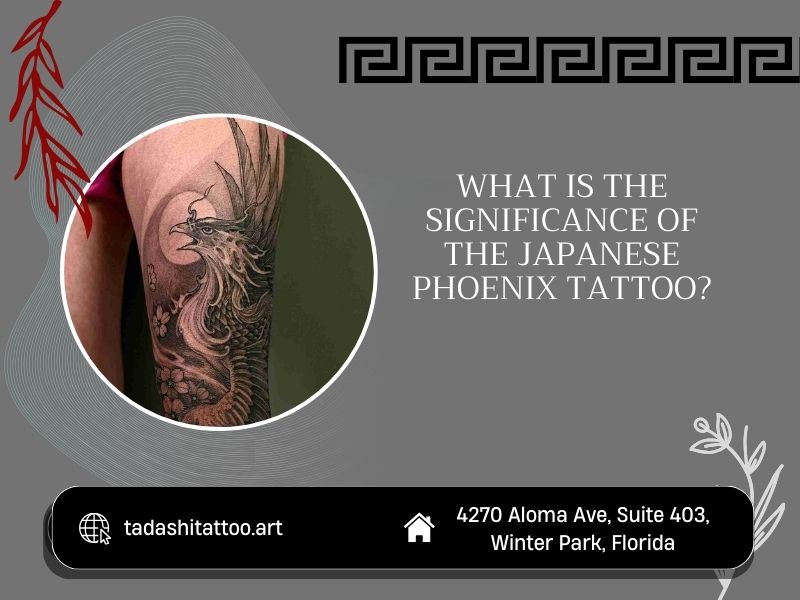What body art is both vibrant and a powerful symbol of undying rebirth? It’s the Japanese Phoenix tattoo, or Hō-ō—an extraordinary icon beyond mere myth. Its blazing colors and fluid lines immediately draw the eye, communicating a powerful theme of strength, prosperity, and overcoming adversity. Let’s explore why this is the ultimate tattoo for those who want both spectacular looks and profound spiritual significance.
1. The Japanese Phoenix (Hō-ō)
The Japanese Hō-ō was introduced from Chinese folklore but has since developed a distinctly Japanese aesthetic.
1.1. Symbolism & Significance:
Royal and Peaceful: The Hō-ō shares a link to royalty, often representing the Empress, and acts as a messenger of tranquility.
Foreshadowing: Its presence foretells a peaceful future, while its disappearance implies conflict. It is widely seen as a bearer of good luck and prosperity.
Modern Resilience: Although its original lore did not include the fire-and-ashes narrative, contemporary readings relate the Hō-ō to resilience, rebirth, and victory against the odds.
Harmony: When shown with the dragon, the Hō-ō symbolizes the perfect balance of Yin and Yang.
1.2. Design Differences
- The Hō-ō keeps its composite bird shape but is stylized with features from native birds, such as the Red-crowned Crane.
- It substitutes traditional Chinese plants with local ones like holly, cherry blossoms, or peonies.
- Japanese tattoo artists use an expressive style, emphasizing dynamic flight, bold use of color, and powerful poses.


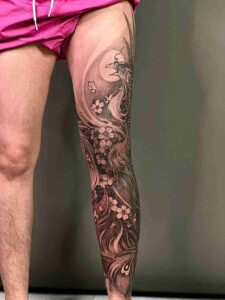
2. Key Differences In Chinese (Fènghuáng) Vs. Japanese (Hō-Ō) Phoenix Tattoos
While sharing a heritage, the Chinese and Japanese Phoenix tattoos differ in style, symbolism, and visuals. The Japanese Hō-ō originated with the Chinese fènghuáng, but local art traditions redefined the mythical creature in both cultures.
| Aspect | Chinese Phoenix (Fènghuáng) | Japanese Phoenix (Hō-ō) |
| Origin | Originated in ancient legend as the King of Birds. Initially, Feng (Male/Yang) and Huang (Female/Yin) pair. | Adapted from Fènghuáng (c. 6th century). Incorporated features of indigenous birds (e.g., Crane). |
| Primary Symbolism | • Yin-Yang Balance (with Dragon).
• Virtue, Prosperity. • Represents the Empress. |
• Imperial Household (Empress).
• Rebirth and Resilience (rising from ashes). • Auspicious Omen (appears during peace). |
| Artistic Style | • Detailed and Intricate (dense layers).
• Used to fill a specific space. |
• Bold and Minimalist (Irezumi style).
• Emphasizes negative space and asymmetry. |
| Associated Elements | • Dragon (perfect union).
• Five Colors (representing 5 virtues). |
• Dragon (Emperor/Empress union).
• Paulownia Tree (nesting site). • Japanese natural elements (waves, peonies). |
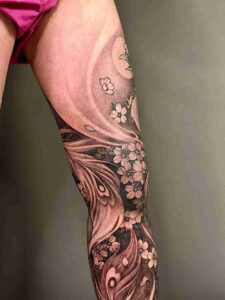

3. 7+ Beautiful Japanese Phoenix Tattoo Designs
3.1. Hō-ō with Clouds and Wind Bars
A classic Japanese tattoo design where the magnificent Hō-ō flies above stylized clouds (kumo) and wind bars (kaze). This placement choice stresses the bird’s connection to the sky and its sacred origins.
Placement: Typically covers the entire back or a full sleeve.
3.2. The Dragon and Hō-ō (Ryu and Hō-ō)
The design combines the masculine Dragon and the feminine Hō-ō, making it the ultimate representation of the imperial couple. It signifies a total, perfect balance, with the Dragon representing the Emperor and the Phoenix representing the Empress.
Placement: Best executed as a full backpiece, with the Dragon and Phoenix placed on opposing halves.
3.3. The Hō-ō and the Kiri Tree
The Hō-ō is illustrated sitting serenely on the kiri tree (paulownia). This pose captures the mythical bird at the moment it brings good fortune, marking a transition into a blessed and prosperous time.
Placement: Typically placed on the upper arm, shoulder, or thigh.
3.4. Hō-ō and Sakura (Cherry Blossoms)
A visually stunning design that contrasts the Hō-ō’s timeless quality with the brief, stunning life of the sakura flower. This contrast beautifully highlights the themes of rebirth and the passing of time.
Placement: Best suited for a full sleeve or a large piece on the side of the body.

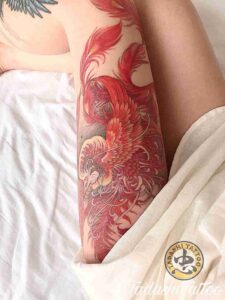

3.5. Hō-ō with Peonies
The peony (botan) is a symbol of wealth, prosperity, and good luck. Bringing these two elements together results in a very bold, visually strong, and fortunate tattoo design.
Placement: Ideal for the thigh or the back.
3.6. Hō-ō and the Elements (Water and Fire)
The artwork blends the Hō-ō’s intrinsic fire with the flowing element of water (nami). This contrast is used to emphasize a theme of powerful change and the harmony between opposing forces.
Placement: Commonly placed on the forearm or the hip/side.
3.7. Hō-ō in Black and Gray
Instead of a brilliant color scheme, this Hō-ō is rendered in refined black and gray. This approach creates a powerful, timeless look that emphasizes the tattoo’s subtle shading and precise detailing.
Placement: Best suited for a sleeve, chest panel, or leg.
3.8. Fine-Line Hō-ō
This is a softer, more lightweight approach. The design relies on delicate linework to capture the movement and form of the phoenix. The result is a highly elegant and contemporary version of the classic motif.
Placement: Commonly on the wrist, forearm, or ankle.
3.9. Abstract or Geometric Hō-ō
This contemporary style depicts the Hō-ō using clean geometric shapes and abstract forms. The image is a highly stylized, artistic expression of renewal and personal transformation.
Placement: Typically placed on the bicep, forearm, or calf.

